Day 13
It’s Tuesday morning and after two nights at Ongava Lodge, Jo has recovered from her bad back. We must leave our 5 star luxury accommodation, the best convalescent home on earth, and get back to camping in the bush. We drive back into Etosha and make our way, slowly past many waterholes, where we see spotted hyenas, elephants and rhinos. We arrive at Halali Camp in the late afternoon. Halali is ok – “A bit Butlins” says Jo, not the most beautiful campsite but it’s practical, being close to many of the best waterholes and Etosha access gates. It’s fenced off from the wilderness and shaded beneath a plantation of Mopane trees. There’s a small store, a bar/restaurant and fuel and water. On the plus side it has a decent swimming pool and a floodlit waterhole with raised seating for excellent animal viewing. Towards sunset, we cook a tuna pasta and take it, together with a bottle of wine, to the waterhole.
There’s a flock of black drongos, catching huge insects in the glare of the floodlights. The site is visited by a young elephant and a few rhinos. By 7.30pm everyone has gone to bed, but we stay a while longer, to be rewarded by the cautious arrival of a big, heavy shouldered, spotted hyena. Why are they always the bad guys? Disney is partly to blame I guess, but they do have a brutish look about them.

Day 14
It’s Wednesday morning and we’re on the road by 6.30am with the objective of seeing as much of eastern Etosha’s wildlife as possible. We have a brilliant start. The closest waterhole to Halali is the lovely Goas waterhole. It’s actually a double waterhole with parking on both sides, affording the opportunity to photograph here at both sunrise and sunset. With green grass between the two pools it’s very popular with waterfowl and has a reputation for being very active with all sorts of birds and animals. Just beyond the water we see an enormous bird of prey – I mean huge. It’s a Martial Eagle, one of the world’s biggest raptors (1 metre, 3 ft long with a wingspan of 2 metres, 6ft) – just leaving its nest for a spot of hunting.
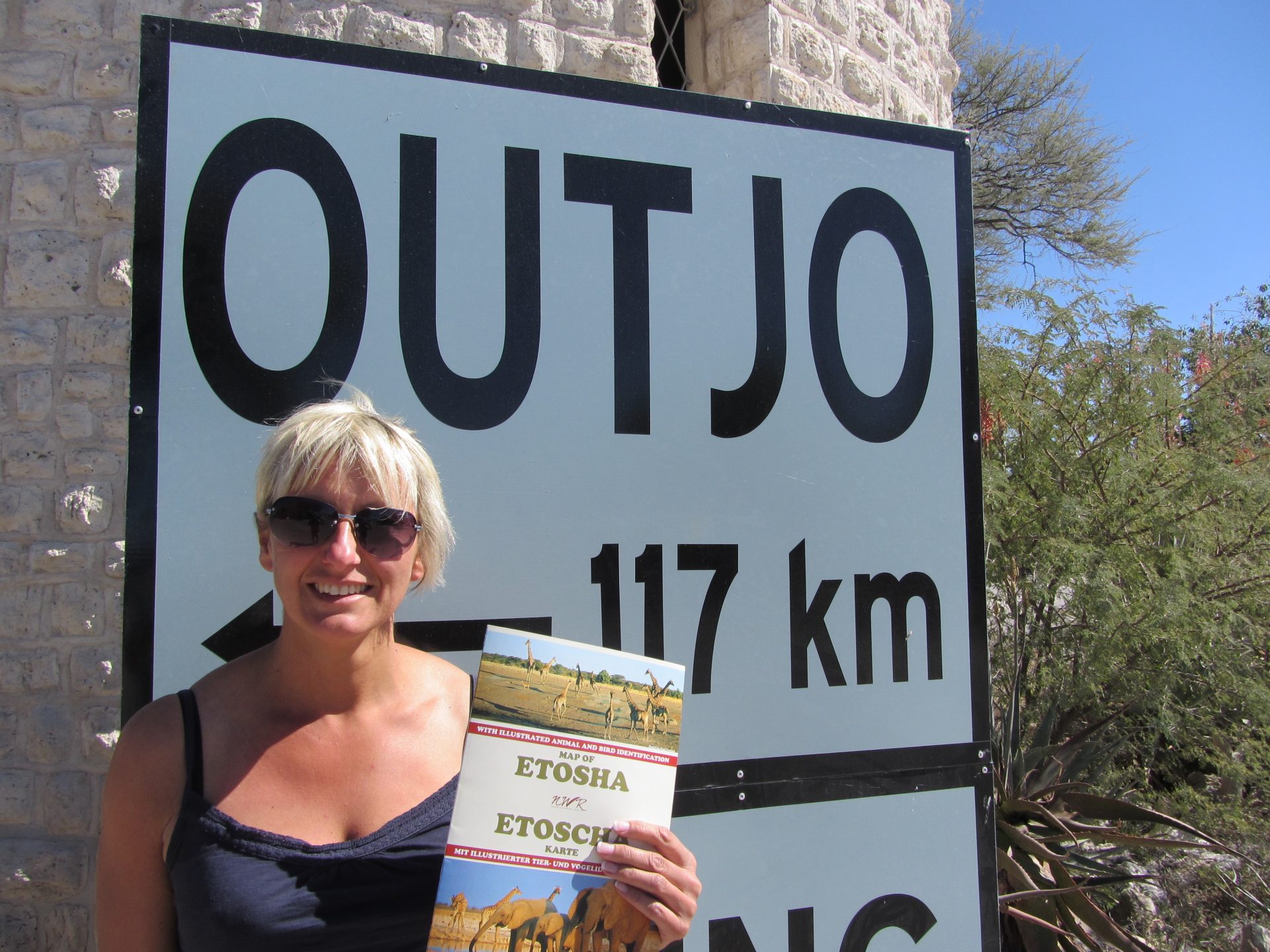

Salvadora waterhole is best known for its evergreen mustard tree, Salvadora persica, which gives this waterhole its name and makes a fine backdrop. The parking area is elevated with a steep drop-off, providing panoramic views out towards the pan, and an almost birds-eye view of any animals directly below, sometimes only a few metres away. Here are zebras and wildebeest. And as it’s clearly a day for very big birds; blue cranes and a Kori Bustard, Africa’s heaviest flying bird, and just off the approach road, a secretary bird with its distinctive head crest of long black feathers – but this one is elusive in the long grass. There are lots of colourful rollers about and Jo is desperate to get a good photo of one, but they’re fast and don’t remain stationery for long. She has loads of images of bluey pinkish blurs. But she is very persistent and ultimately gets this shot.


At midday, the sun is at its most cruel – an interesting time to take a closer look at the salt pan. There’s a picnic site on a nearby beach with thatch covered picnic tables and brick built barbeques, and remarkably, no perimeter fencing or warning signs. The whole setup is open to the wilderness and the beasts that would eat you. Stepping out of the vehicle, we wonder if we’re safe. I think we could eat out here during the day, but an evening barbeque would be bonkers. We take a short walk out onto the shimmering salt – it’s very barren, bright, incredibly hot, inhospitable and seemingly lifeless. Quite mesmerizing but not an environment in which to linger.
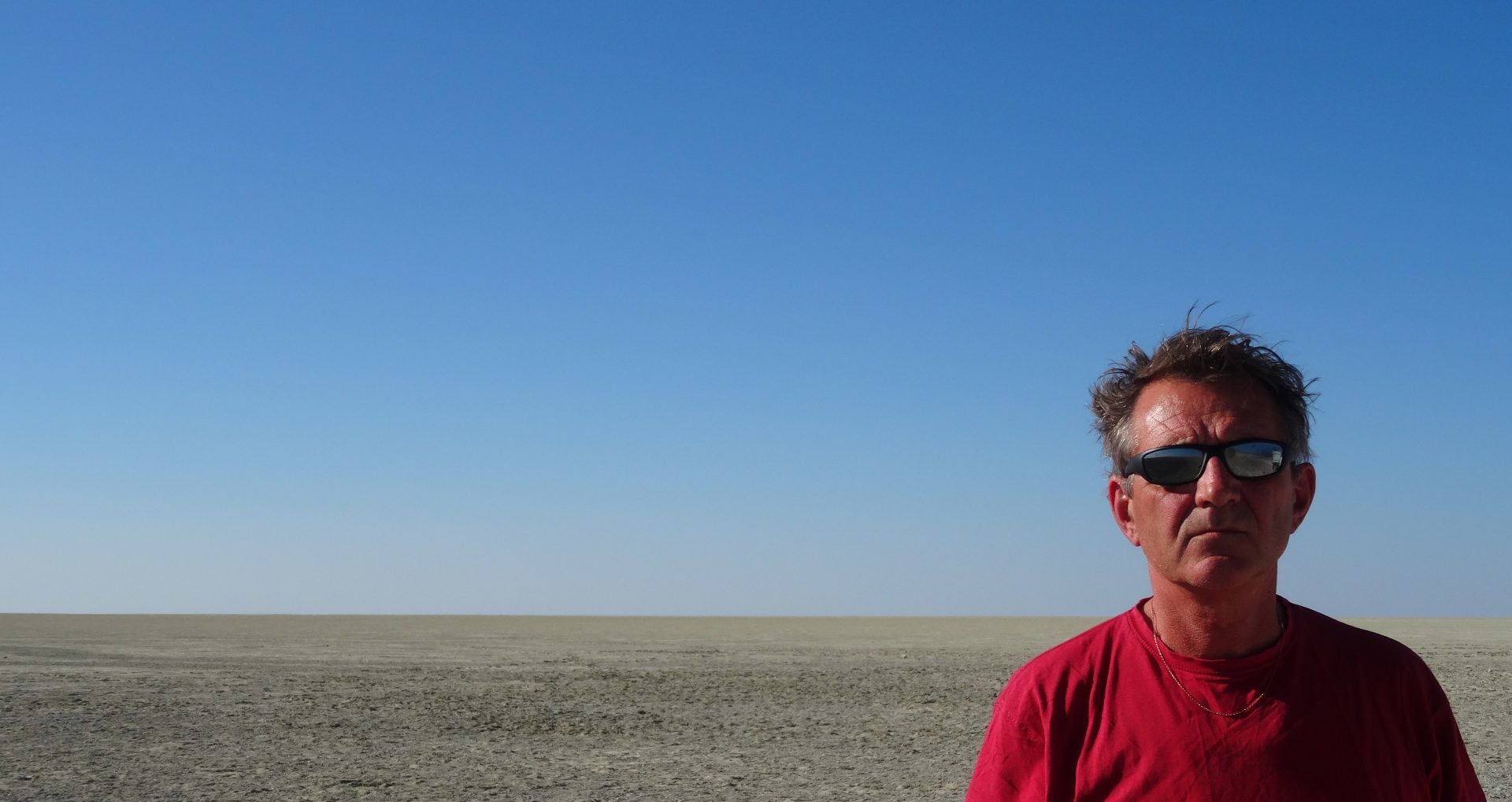

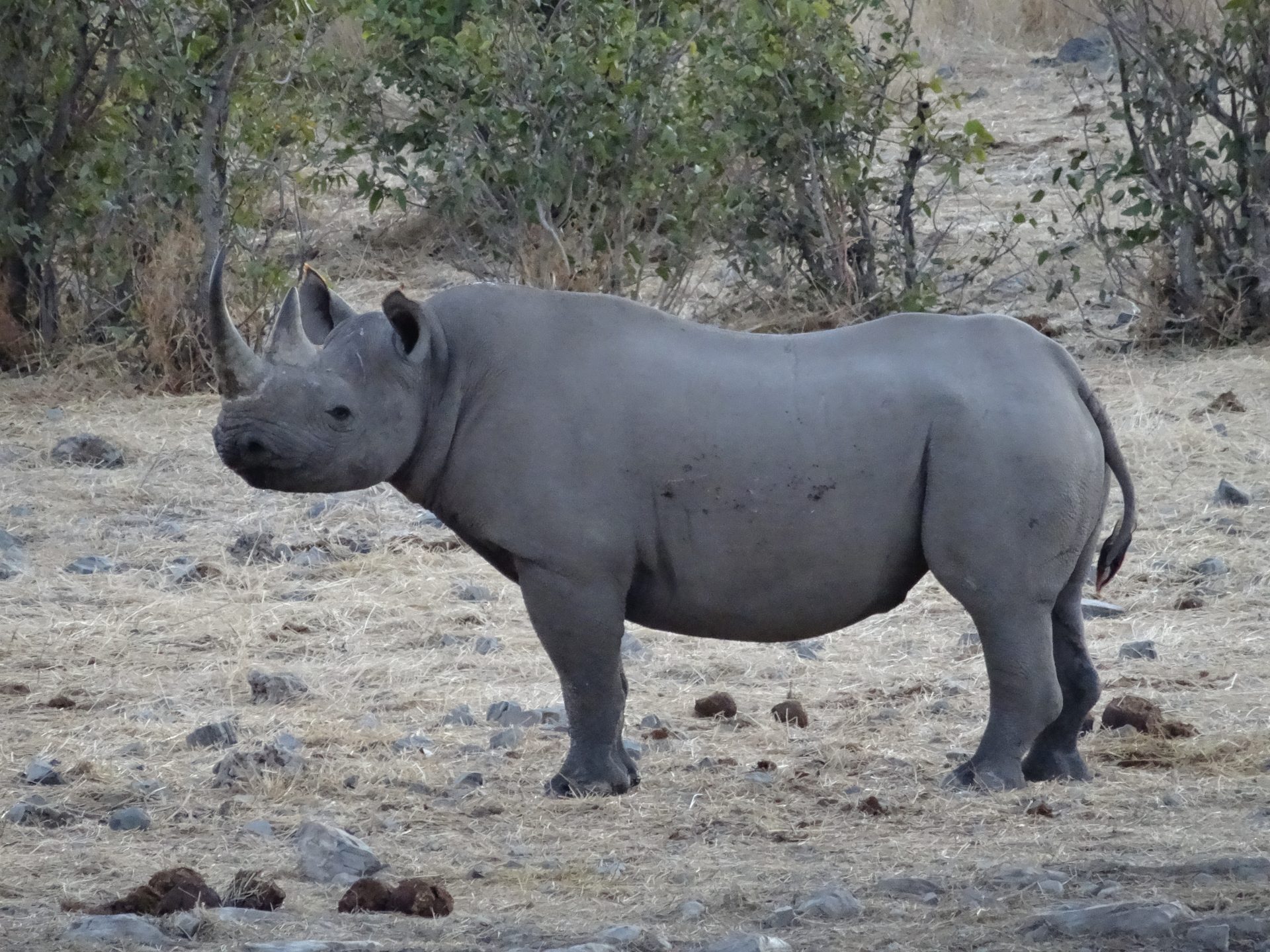
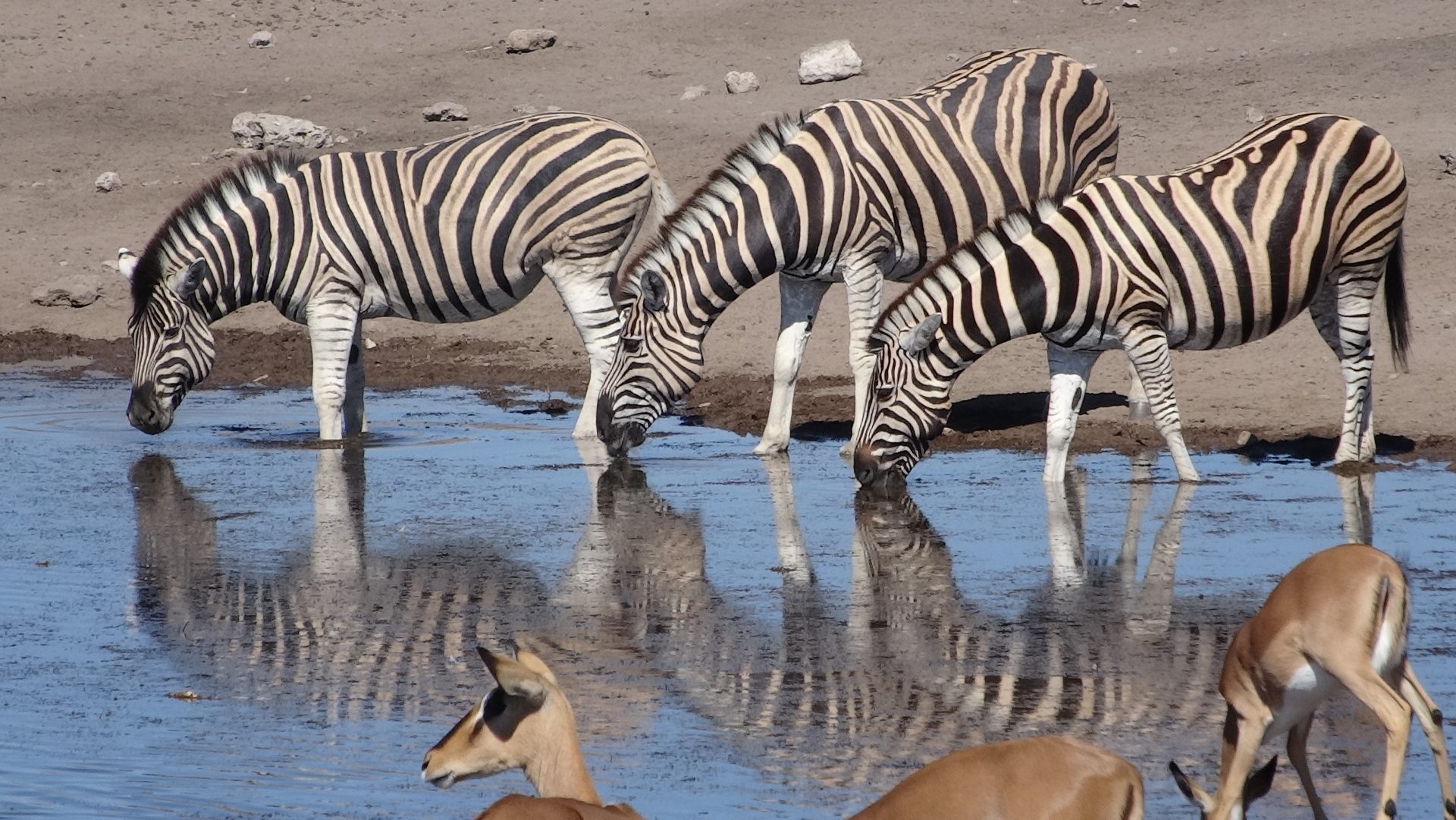

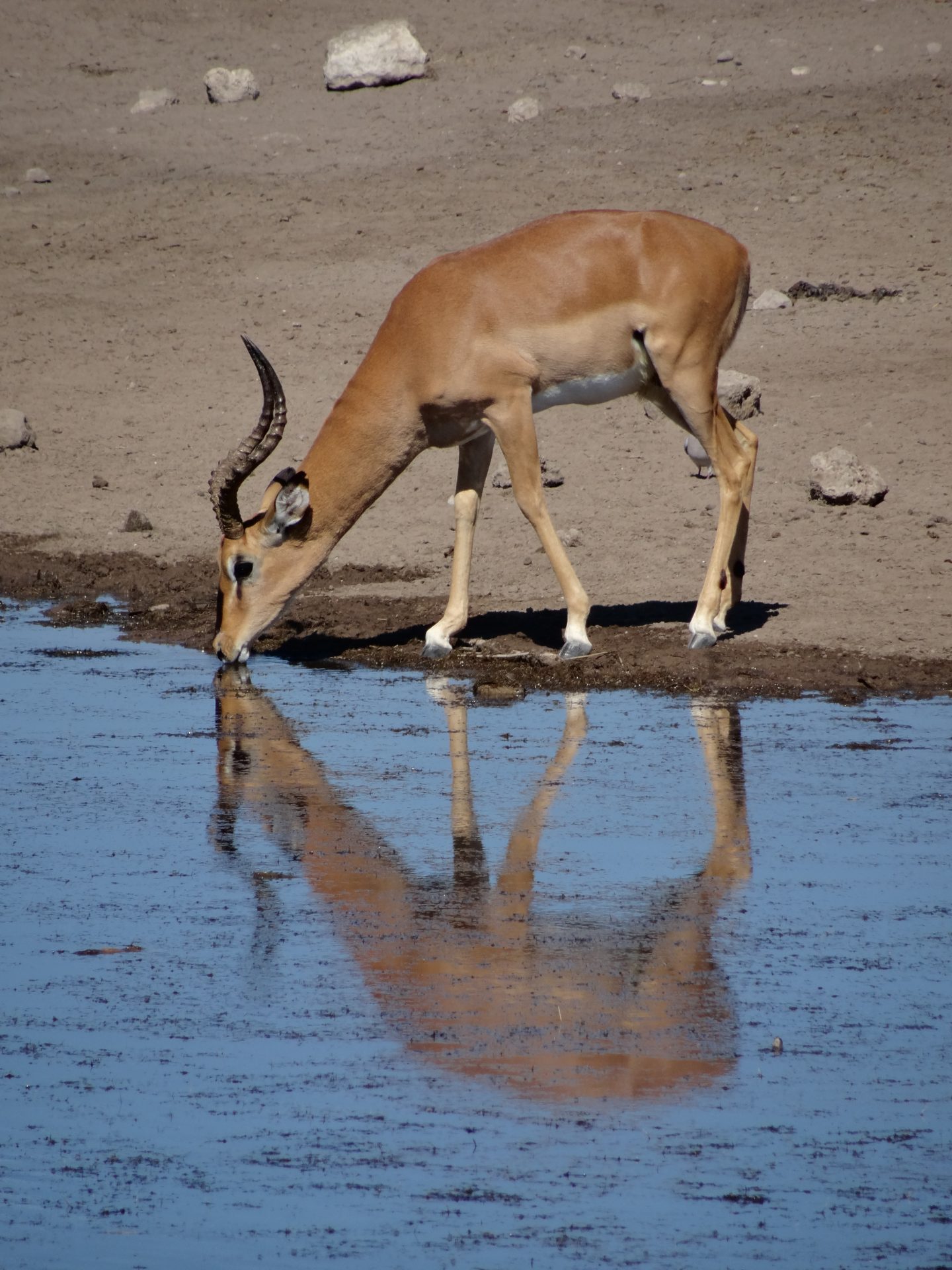
In the late afternoon we’re driving along a sandy track to Nuamses waterhole. It doesn’t have a rave review in the park guide but it’s on our way. I remark to Jo that we’ve had a memorable day in Etosha but we’ve not seen any elephants. Then up ahead Jo spots big mounds of elephant droppings – they must be using this track to get to Nuamses. I can’t agree with the guide, it’s very picturesque, a big sinkhole about 70 metres across, surrounded by rocks with a parking spot near the rim, but there are no animals drinking at it, so we turn around and head back down the track. After a few minutes we take a sharp left hand bend and stop. Two hundred metres ahead, walking towards us, occupying the whole width of the track, is a huge bull elephant. I don’t expect him to give way. I look to the left and right. The verge on the right looks firm and I pull off, stop the engine and wind up the windows. He’s seen us but doesn’t alter his stride one inch. We know that elephants are used to cars, we must just keep still and silent. I can’t help whispering “no sudden movements” to Jo, but she’s not going to move a muscle. At fifty metres we appreciate the magnificence of this creature. He towers over us and could flip Sputnik over at a whim. He’s in musth, on heat, liquid dripping from his groin, but he seems very composed. Jo is seated closest to his approach. He’s now just a few metres away and in the silence we can hear the steady crunch of his massive feet on the track. As he nears us he alters his stride almost imperceptibly, swings his head slightly in our direction, eyes us, and slowly flips his trunk over his right tusk – a small gesture of recognition or warning – then he resumes his steady walk and passes by. Jo and I quietly cheer with exhilaration. A 4X4 approaches – the French occupants have been watching our encounter. They stop and ask us how it was to be so up close to the giant. We’re uplifted, lost for words, unable to relate our visceral excitement. They’re clearly thrilled for us and our good fortune. We all laugh. We need to see more of the elephant so we turn again and follow him to the Nuamses waterhole where we, slowly calming down, watch him for an hour, washing and drinking.

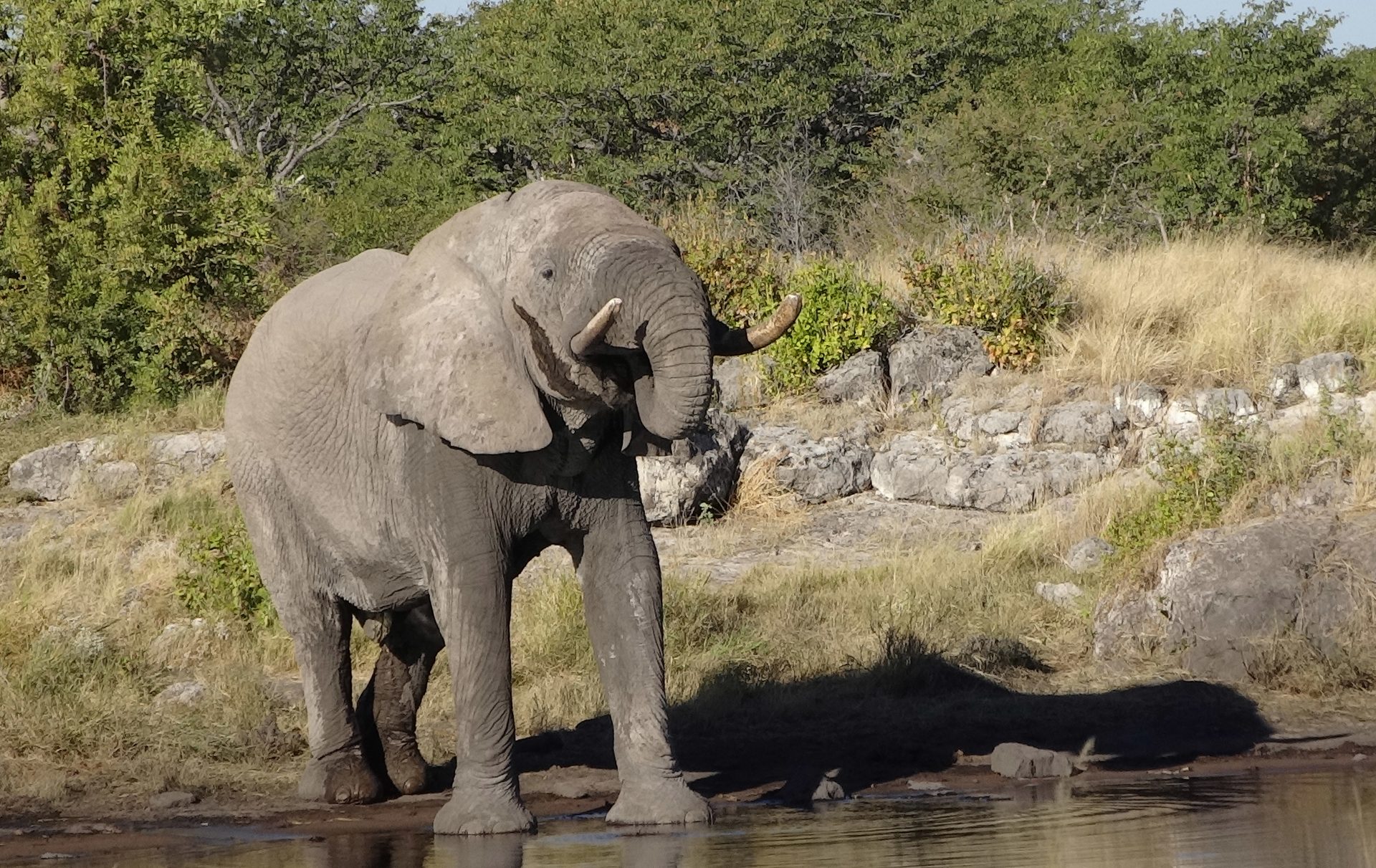
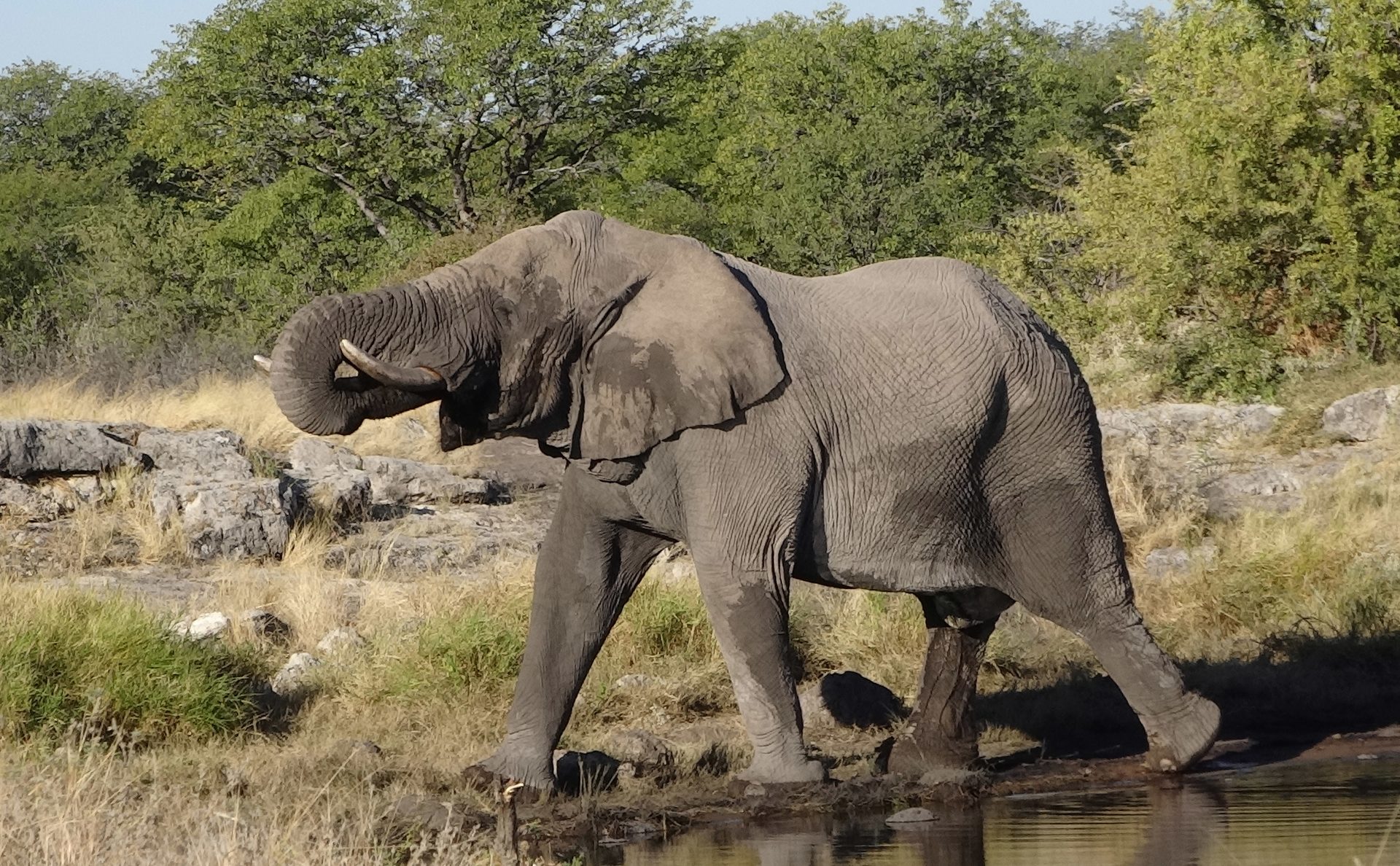
Back at Halali camp we rest before dinner at the restaurant – proper African fare of springbok, mealie meal and Castle beers. Then we’re back at the seating stand by the waterhole where this evening’s performance is already underway. There are a couple of white rhino, one with a calf, embracing by the pool, gently rubbing their horns and faces together – a tender and affectionate scene – so gentle for such big animals. The calf approaches the viewing stand up close to take a good look at us. Who’s observing who here? It returns to the adults for a bit of a cuddle too – ears, horns, mouths rubbing against each other in the most gentle display of affection. Rhinos are old softies, says Jo. A hyena arrives and is swiftly seen off by one of the adults. No they’re not softies at all.
It’s been an exhausting day and I retire to bed before Jo, who wants to remain at the waterhole in the hope of seeing an elusive leopard. I have a more irritating challenge. Sputnik’s roof won’t pop up. “Ze escape pod has malfunctioned Sergei”, I mumble in a poor Soviet cosmonaut accent. The clasps are bent with age and I must use a pair of pliers to release them. It’s a solution that works for now but will cause us problems later. Jo’s quest for a leopard is not successful.
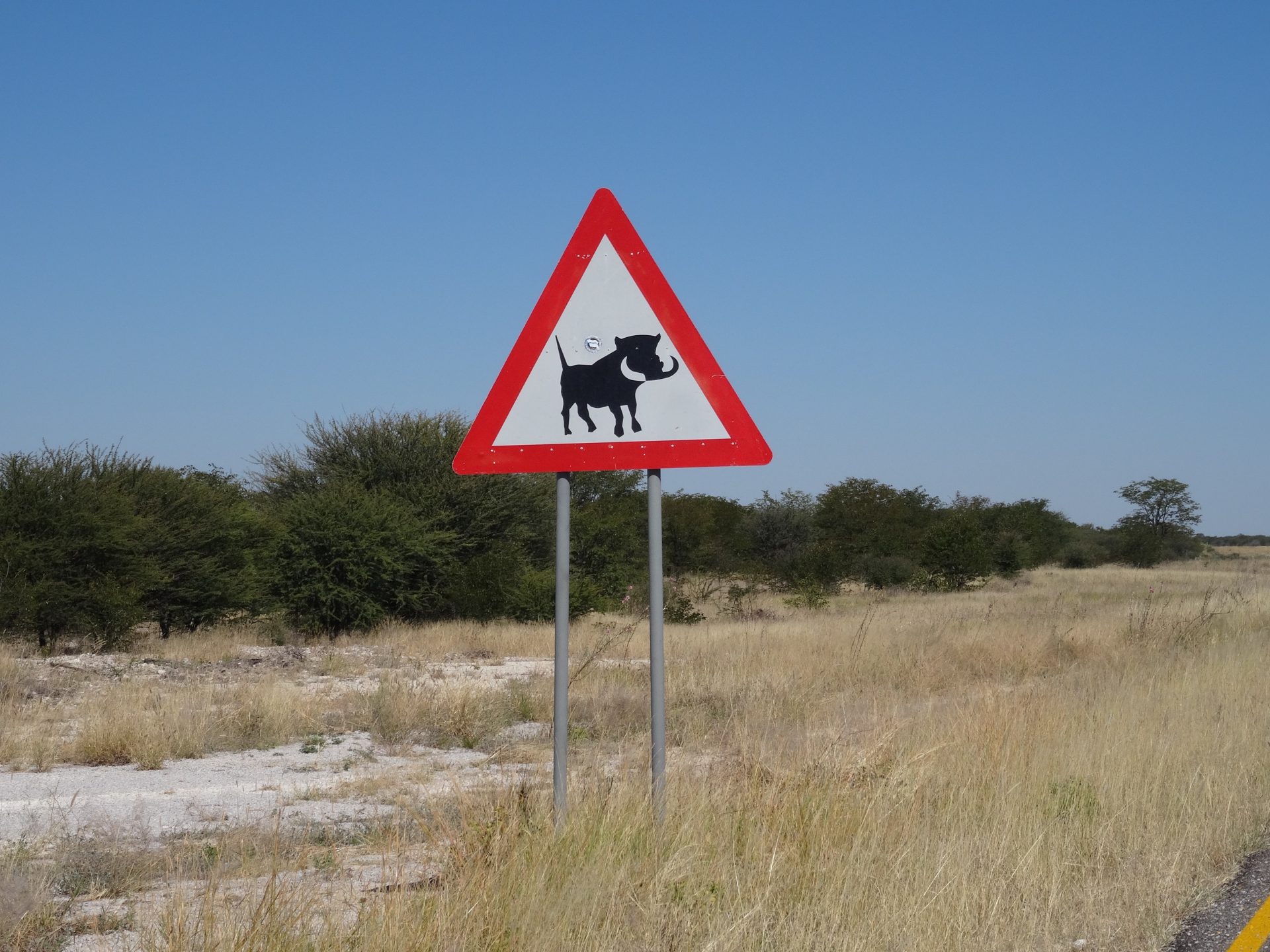
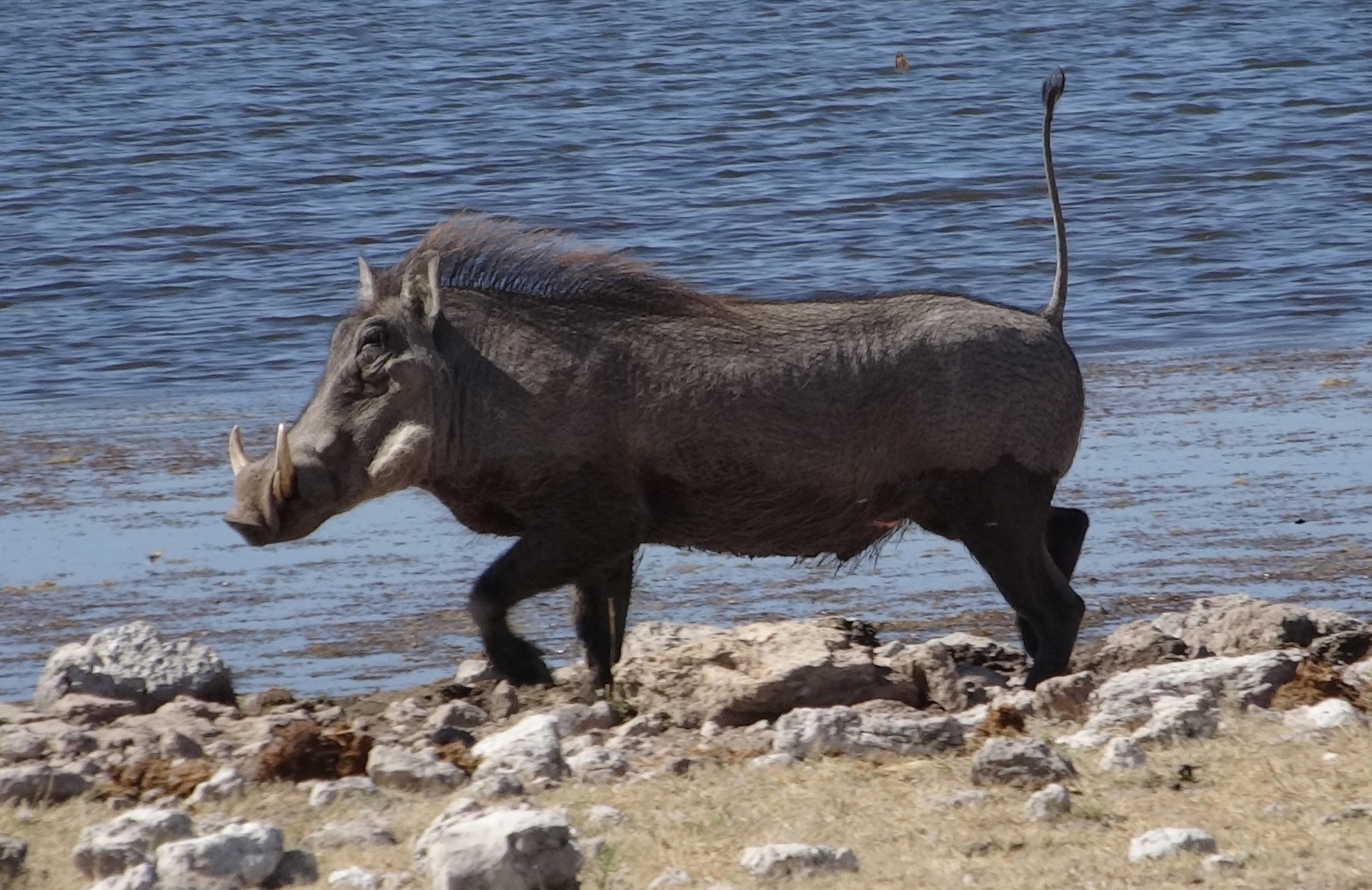
Day 15
It’s Thursday morning, our last in Etosha, and we’re up at 6am. With one exception, big cats; lions, leopards and cheetahs have eluded us. The exception was a few days ago when we spotted a male lion some distance away lying in long grass next to the pan, with his head up. Only visible through binoculars, his face was strangely deformed; big nose, one eye set lower than the other, a badly stuffed and stitched pantomime lion, not the king of the jungle at all. The guide suggests a couple of waterholes towards the west that are frequented by lions. As we approach Rietfontein waterhole, Jo asks me to pull in and immediately upon turning off the main road, we must stop in our tracks. Two young male lions are ambling down the track towards us. It’s remarkable how we seem to be able to conjure up close encounters with any animal we choose, or perhaps it’s testimony to the healthy numbers of species that live in Etosha.

We do the usual; engine off, doors locked (why? The lions won’t open them!), windows up, video on. These two young fellas are healthy and strong, with weird yellow eyes fixed on us as they casually pad by. They have huge paws. Like yesterday’s elephant, they’re used to being observed, at ease with the vehicle. They lie up under the shade of some trees and allow us to photograph them. We continue west and by 8.30am we’ve seen lions, a rhino by the roadside and a beautiful giraffe with her tiny foal, kicking up his ungainly, gangly legs. By 9am we’ve encountered two elephants, five kori bustards, a black heron, and a blacksmith lapwing. At the Nebrowni waterhole a herd of zebra are fighting, barking, braying, kicking and biting, for access to the water. Something yellow and fox-like runs across the road in front of us. I think it’s a bat-eared fox.

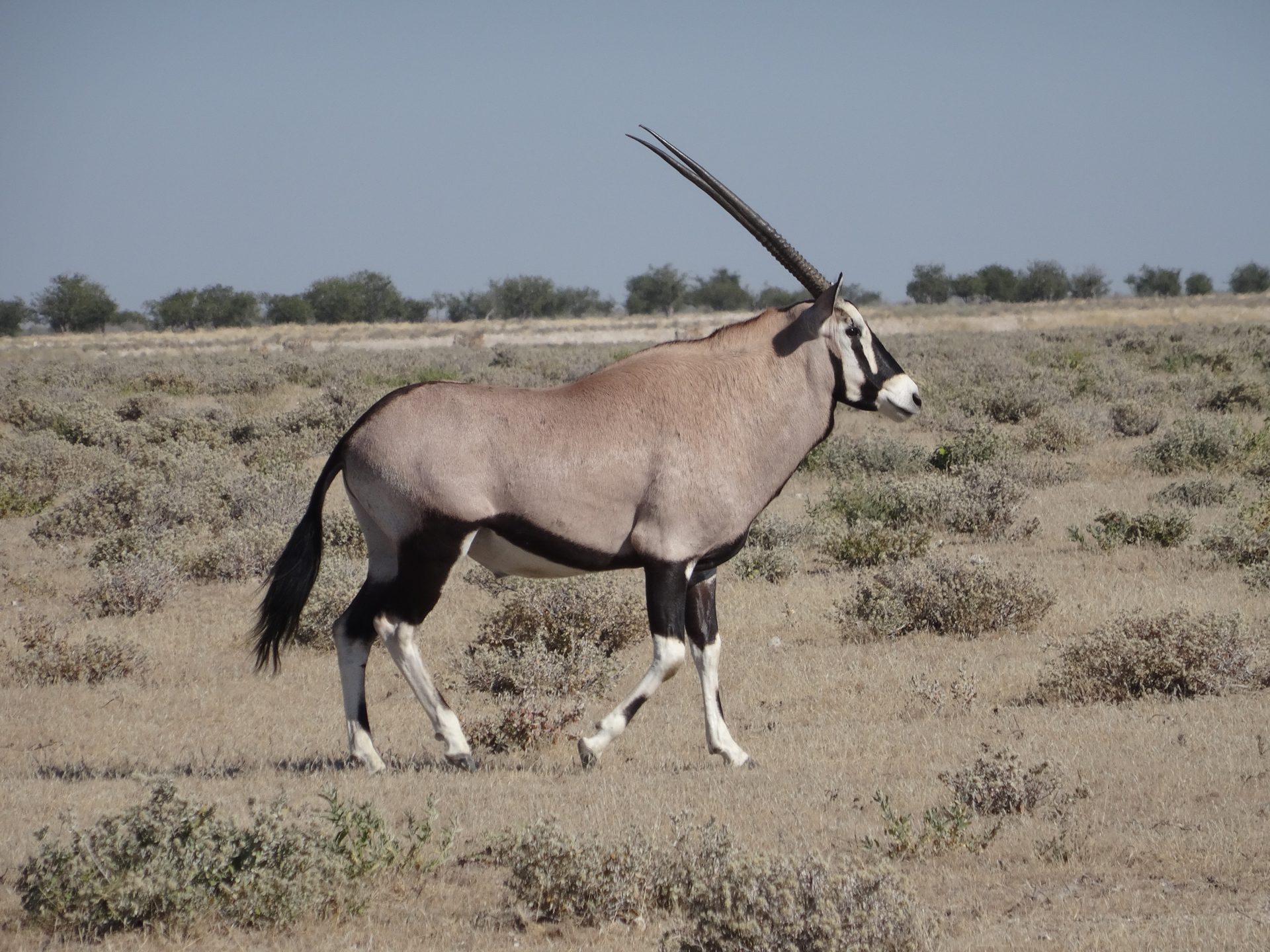
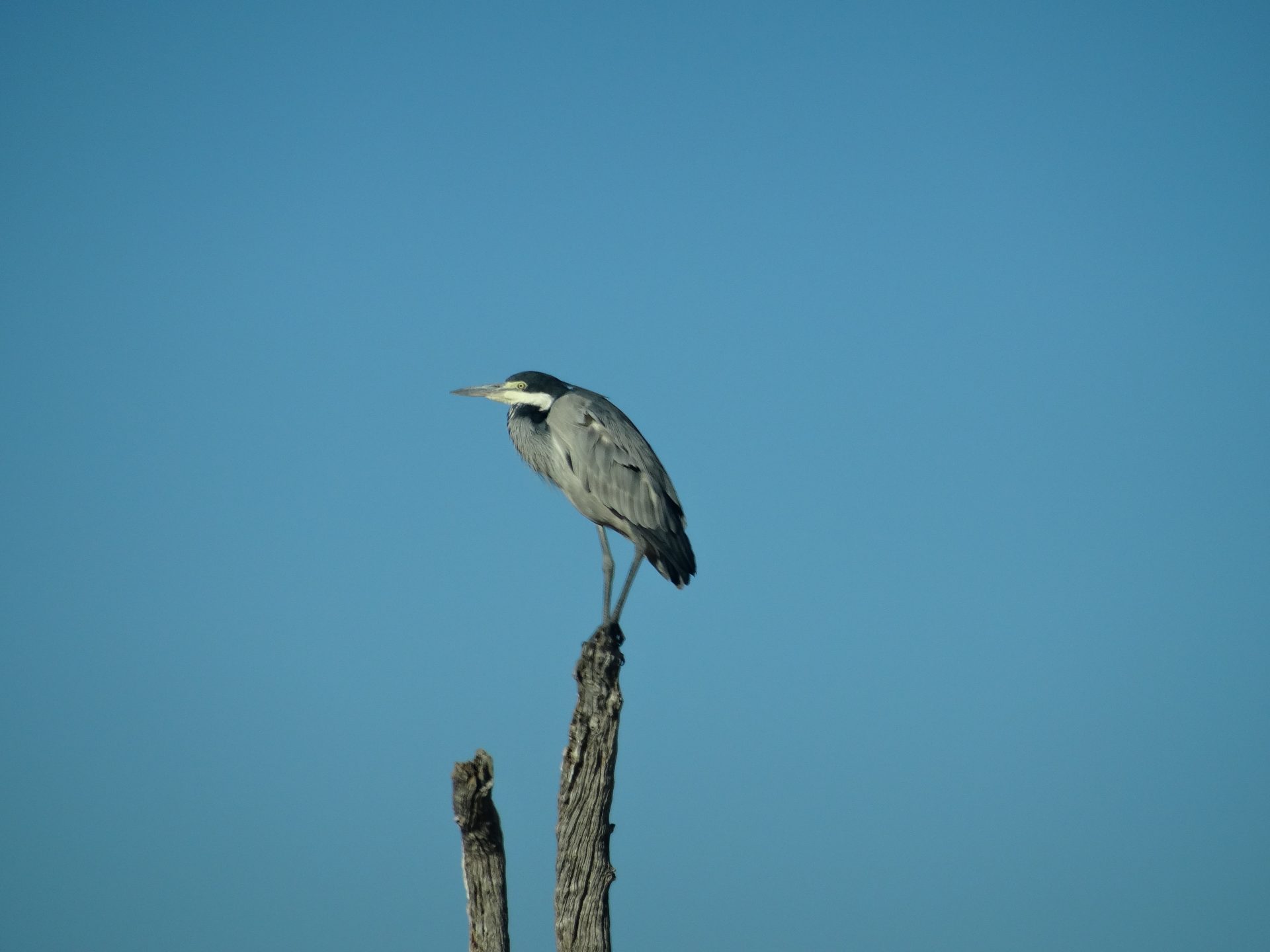
At 10am we approach the Okondeka waterhole, the most western hole on the pan. A couple of big lappet faced vultures are floating overhead. Is there a cadaver lying about, or about to be one? From Okondeka there’s a wide open view of the pan with animals as far as the eye can see; ostrich, springbok, wildebeest, zebra, oryx, and many species of birds too. A silver backed cape fox is standing very close to us looking out over the pan – he seems concerned and agitated. We can see the reason. Three adult male lions are lounging in the grass, and his mate is beyond them on the open pan. All of the nearby animals seem unaware of their presence. Either that or they are aware but know that these lazy males will not harm them. Jo’s guess is that the females are out doing all the hard work, hunting elsewhere. It was a scene to behold – animals so close to their potential predators. We leave the unhappy fox, pacing to and fro.
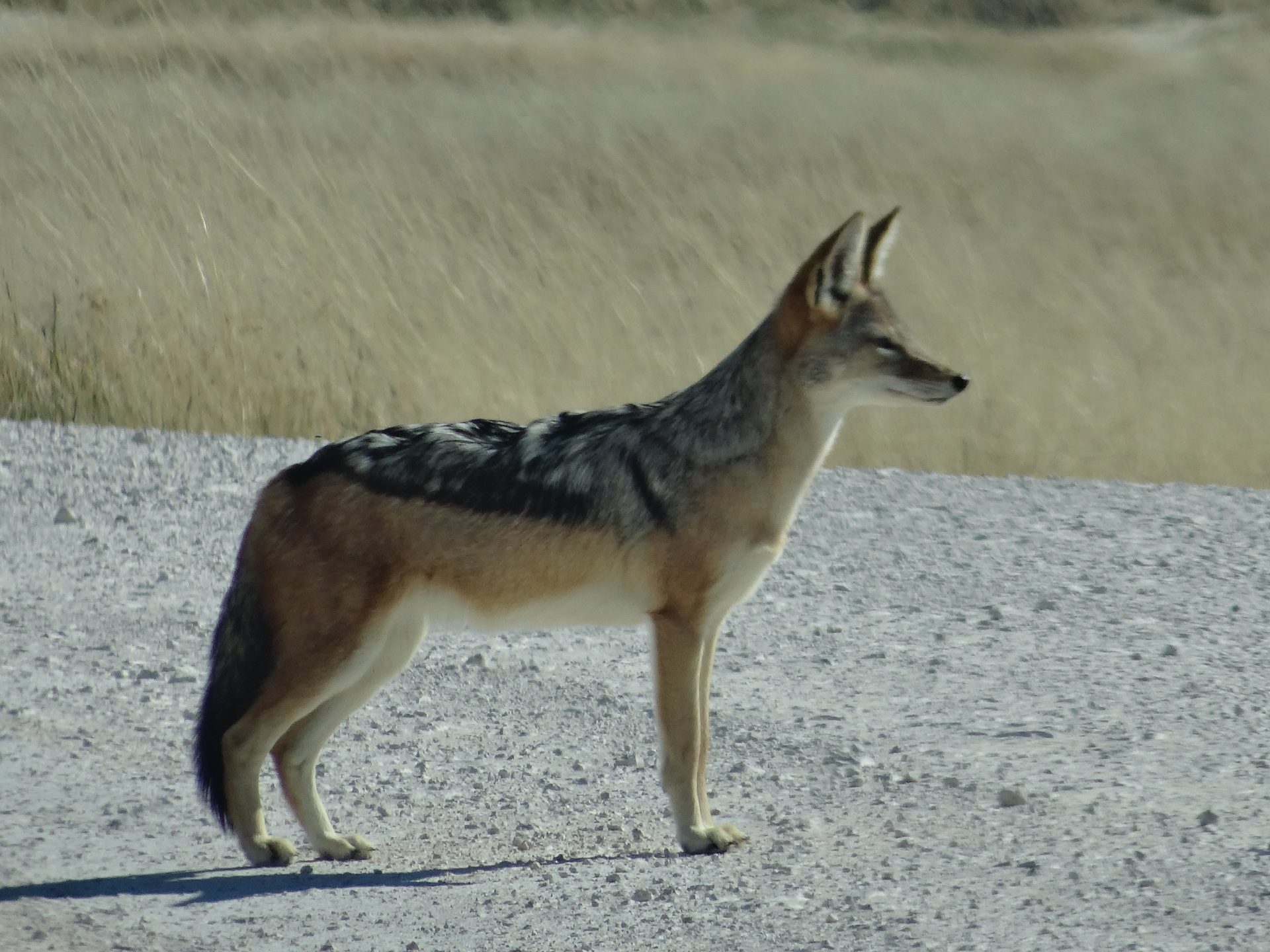
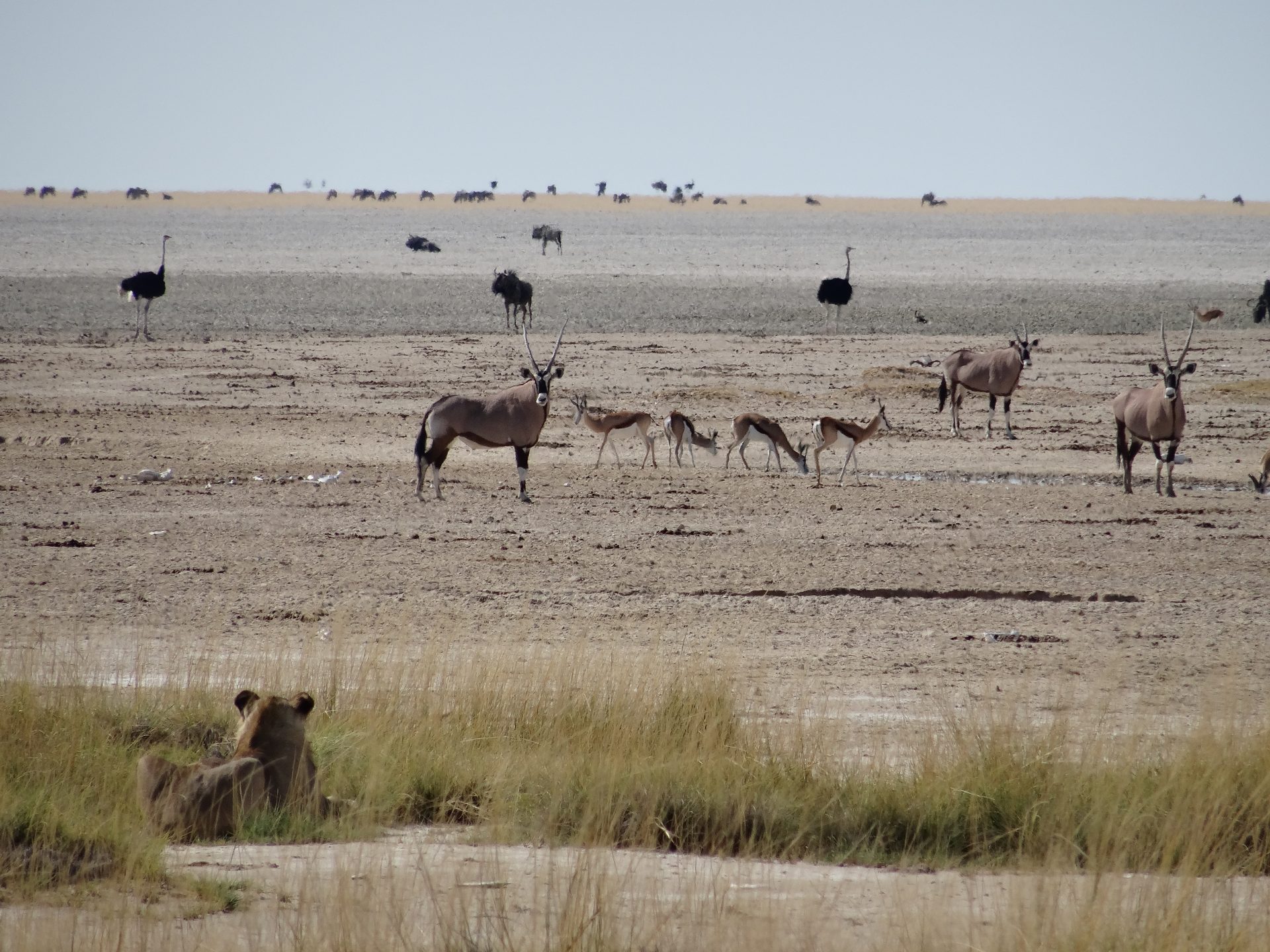
En route to the Anderson gate, we stop at the Okaukuejo camp for lunch by the waterhole which is like a Weatherspoon’s pub on a Friday night. We reckon there are about two hundred and fifty zebras with kudu, oryx, wildebeest, springbok and three elephants; all crowded around the pool. The elephants are very affectionate with each other. One seems to put his trunk into another’s mouth, perhaps giving a drink. Another is giving herself a shower. There are hundreds of bright yellow weaver birds building their extraordinary cylindrical nests with their downward-facing, narrow entrances. And there’s a pair of beautiful crimson breasted shrikes. It’s an amazing waterhole with chalets immediately next to it – Jo likes chalet w27 and w29. She says that she generally prefers the more remote waterholes where you can experience the exhilaration of a surprise, but she’d be very happy to stay here too.
But now we must return to Windhoek via the spectacular Waterberg Plateau.

